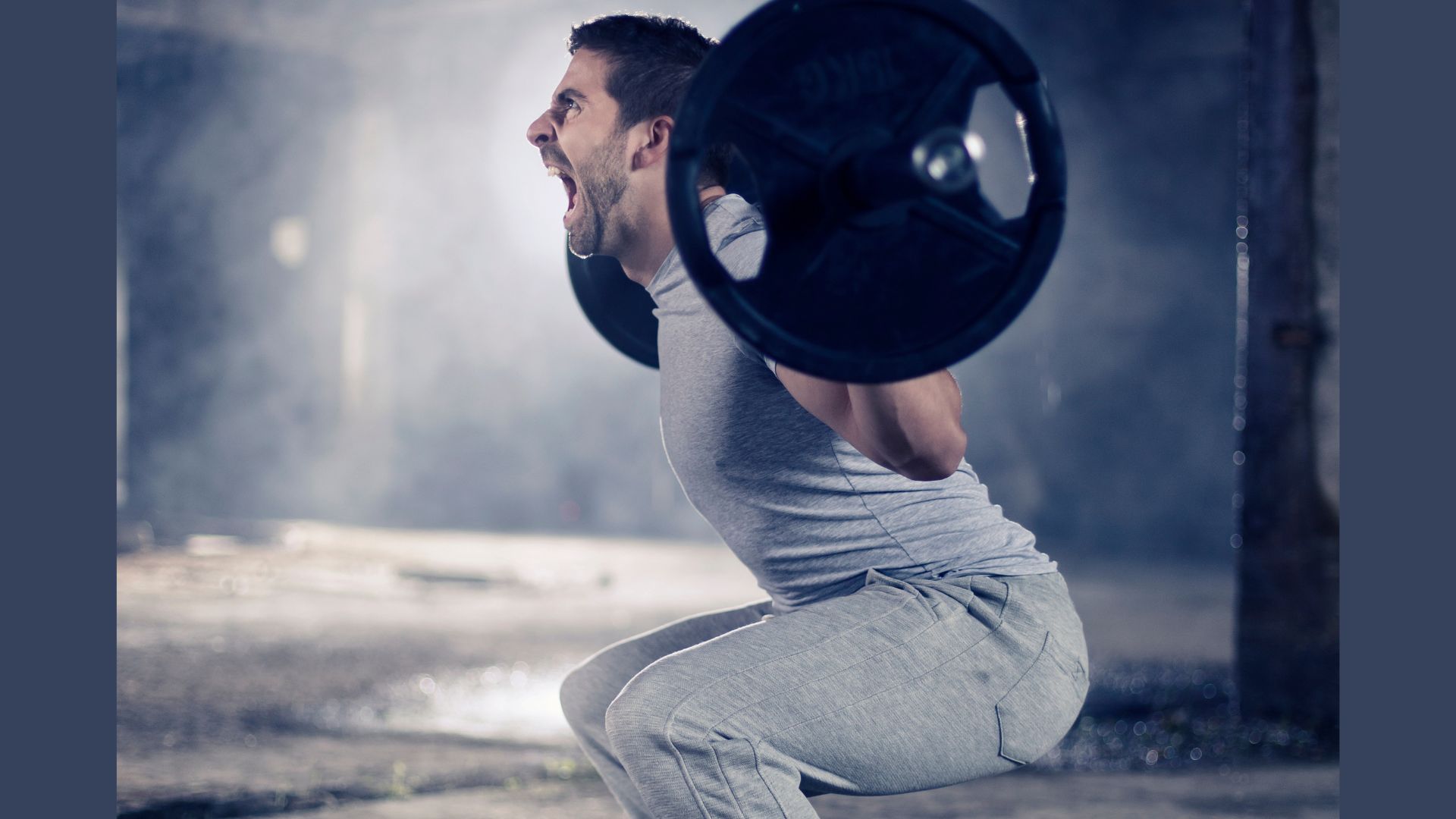Hey there, fitness enthusiasts! We’ve all been there you’re in the gym, grinding out those squats with a heavy barbell on your back, and your workout buddy just won’t stop chatting.
But wait, is talking while doing squats with a barbell actually a bad idea? In this blog post, we’re going to dive into the nitty-gritty of this debate.
We’ll explore whether casual conversation during squats can be a harmless gym habit or if it’s a recipe for potential disaster. So, grab your workout gear and let’s get talking (or not) about squats and safety!
Exploring whether talking while doing squats with the barbell is bad or not.
Talking while doing squats with a barbell can potentially be problematic, but it depends on various factors such as your fitness level, the weight you’re lifting, and your overall form.
Here’s a more specific breakdown:
Safety and Form: Squats with a barbell require proper form to avoid injury. Focusing on your form is essential, especially when lifting heavy weights.
If talking distracts you from maintaining good posture, it can increase the risk of injury.
Breathing: Proper breathing is crucial during squats. You should take a deep breath before descending into the squat and exhale as you lift the weight.
Talking can disrupt your breathing pattern, making it harder to stabilize your core.
Weight and Experience: If you’re lifting a relatively light weight and you have experience with squats, talking may not be as much of an issue.
However, if you’re lifting heavy or near your maximum capacity, maintaining focus is crucial for safety.
Spotter: If you have a spotter or someone supervising your squat, they can provide feedback and ensure your safety.
In such cases, brief communication may be acceptable, but it should not compromise your form or concentration.
Concentration: Squats require mental concentration to engage the right muscles and maintain balance. If talking leads to loss of focus, it can affect your squat performance and safety.
In other words, while some casual conversation during squats may not be harmful, it’s essential to prioritize safety and form.
If you’re lifting heavy weights or are relatively new to squatting, it’s generally better to save conversations for between sets.
Always listen to your body and maintain proper technique to reduce the risk of injury during this exercise.

Further Explanations.
Let’s dive deeper and elaborate further on all the points mentioned.
let’s break down all these points in more detail here:
1. Safety and Form.
Proper form in squats involves maintaining a straight back, a neutral spine, and ensuring your knees track over your toes without collapsing inwards or outwards.
Good form also includes proper depth, where your hips go below your knees, and keeping your chest up.
When lifting heavy weights in a barbell squat, any deviation from this proper form can increase the risk of injury. For example, rounding your back or letting your knees cave in can strain your lower back, knees, or hips.
If you’re engaged in a conversation while squatting, it may divert your attention away from maintaining these critical aspects of form. This lack of focus can lead to poor mechanics and, ultimately, injuries.
2. Breathing.
Proper breathing during squats helps with stability and safety.
Before descending into a squat, it’s recommended to take a deep breath in, filling your lungs and creating intra-abdominal pressure. This pressure stabilizes your core and spine.
As you ascend from the squat, you should exhale, releasing some of that pressure.
Talking while squatting can disrupt this breathing pattern. If you’re chatting, you might not take that deep breath before the squat, leaving your core less stable.
This can increase the risk of straining your lower back or losing balance.
In essence, maintaining good form during squats is vital for preventing injuries, and proper breathing supports this by stabilizing your core and spine.
Talking while squatting can divert your attention away from these crucial aspects, potentially leading to poor form and an increased risk of injury.
To ensure safety, it’s often better to save conversations for rest intervals between sets or less demanding exercises.
3. Weight and Experience.
When it comes to squats, the weight you’re lifting and your experience level play a significant role in whether talking is problematic.
If you’re lifting a relatively light weight that you can manage comfortably and you have experience with proper squat form, talking may not be as much of an issue. Lighter weights are generally easier to control.
However, if you’re lifting heavy weights or approaching your maximum capacity, maintaining focus is crucial.
Heavy weights require more effort to control and stabilize, and any distraction, such as talking, can compromise your ability to handle the load safely.
4. Spotter:
Having a spotter, someone who is knowledgeable about proper squat form and can assist you, is a significant advantage when lifting heavy weights.

A spotter can provide feedback on your form and ensure your safety by being ready to step in if you struggle during a lift.
In situations where you have a reliable spotter, brief communication may be acceptable. You can communicate with them to coordinate the lift or ask for assistance if needed.
However, it’s essential to keep these interactions concise and not let them compromise your form or concentration.
5. Concentration.
Squats demand mental concentration for several reasons:
Engaging the right muscles: To perform squats effectively and safely, you need to engage your glutes, hamstrings, and quadriceps while maintaining core stability.
Any distraction that leads to improper muscle engagement can increase the risk of injury.
Maintaining balance: Squats require balance, especially when lifting heavy weights. Losing focus or talking excessively can disrupt your balance and lead to falls or instability during the lift.
In essence, talking can divert your mental focus away from the critical aspects of squatting, including muscle engagement and balance. This loss of concentration can negatively impact your squat performance and safety, particularly when dealing with heavy weights.
In summary, weight, experience, and the presence of a spotter are important factors in determining whether talking during squats is acceptable. For heavier weights and less experience, it’s best to prioritize concentration and proper form over conversation to ensure safe and effective squatting.
A concise complete tabular on this topic here.
Here’s a concise tabular summary on the topic of talking while doing squats with a barbell:
| Aspect | Talking During Squats with a Barbell |
|---|---|
| Safety and Form | Can distract from maintaining proper form, increasing the risk of injury, especially with heavy weights. |
| Breathing | Disrupts the breathing pattern, which is essential for core stability and spinal support during squats. |
| Weight and Experience | Less problematic with light weights and experienced lifters but risky with heavy weights and beginners. |
| Spotter | Having a spotter can mitigate risks, but communication should be brief and not compromise form or concentration. |
| Concentration | Squats require mental focus for muscle engagement and balance; talking can lead to loss of concentration and compromised performance. |
In all this, talking during squats with a barbell can be problematic, especially for safety and form, disrupting breathing patterns, and compromising concentration, particularly when lifting heavy weights or if you’re a beginner. However, with light weights and experienced lifters, it may be less of an issue, and having a spotter can help mitigate risks if communication is brief and doesn’t compromise form or focus.
Conclusion.
In conclusion, talking while performing squats with a barbell can pose risks to safety, form, and concentration, particularly when handling heavy weights or if you’re new to the exercise.
Maintaining proper form, a consistent breathing pattern, and mental focus are crucial for squatting safely and effectively. While brief communication with a spotter may be acceptable, it should not compromise these essential aspects of the exercise.
Therefore, it’s generally advisable to prioritize focus and form over conversation during barbell squats to reduce the risk of injury and maximize performance.

Hey there, it’s Mike Rrsq, the Editor-in-Chief over at Jsquat.com, and I’m absolutely obsessed with all things squat fitness! I’ve been lucky enough to get some serious recognition for my work in this field. With a solid background in the fitness and wellness industry, I’ve been there right from the get-go, helping shape this website into what it is today.
You see, I’m not just the boss around here; I’m also a passionate contributor. I love sharing my insights through my articles, and trust me, they’re not your run-of-the-mill stuff. Each piece I write is a labor of love, filled with my expertise and real-world experience in the fitness universe. So, if you’re into fitness and looking for some inspiration, you’re in the right place!

